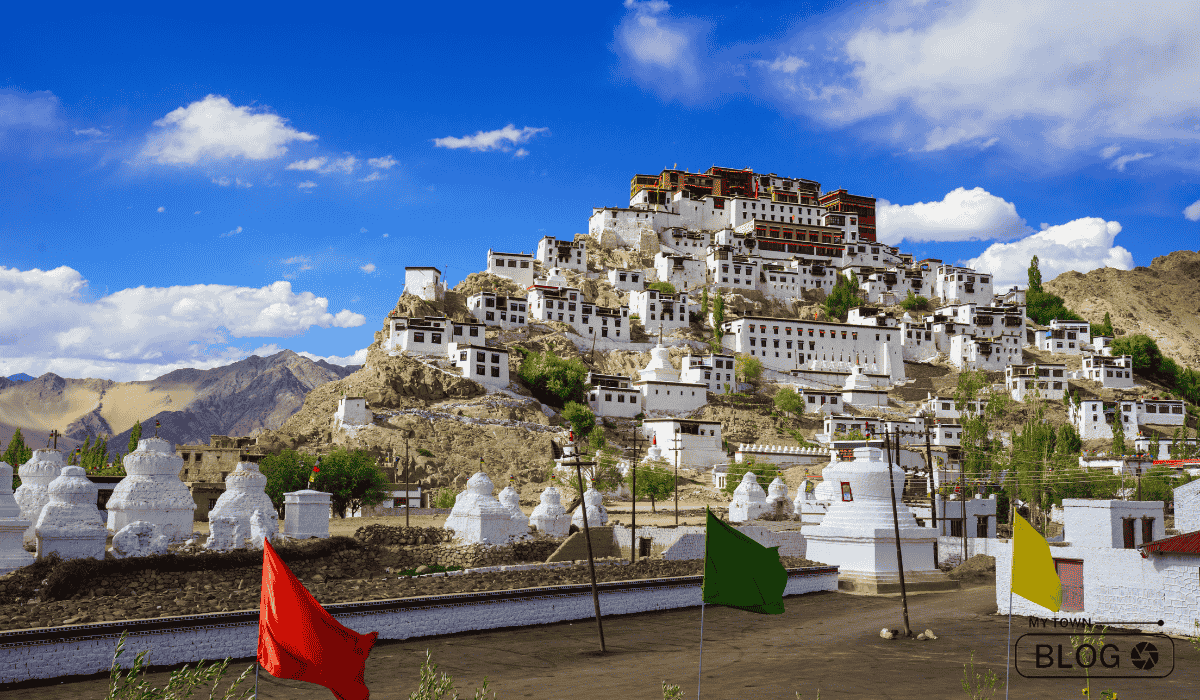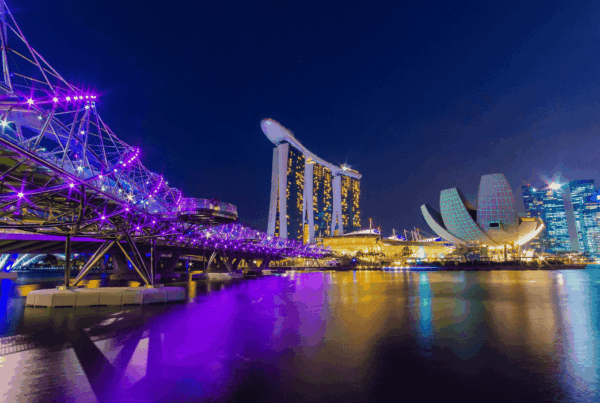Ladakh is a mystical place in northern India known for its high mountains, peaceful monasteries, and clear blue skies. This is the most favorite destination of adventure lovers and nature enthusiasts. Whether you want to go on a thrilling Ladakh bike trip, learn about the unique flora of Ladakh, spot rare birds of Ladakh, or discover the crops grown in Ladakh, this guide has all the information you need. We shall further guide you with the best Ladakh tour packages if you’re coming from Delhi or other cities.
Ladakh Bike Trip: A Journey of Memories
A Ladakh bike trip is the ultimate adventure where landscapes are awe-inspiring, mountain passes challenge your limits, and freedom leaves no comparison. It is more of an experience than a journey for bikers and one which creates memories forever. The cold desert landscape of Ladakh is so stark that thousands of biking enthusiasts throng here every year. Here is how you can plan this wonderful adventure.
Best Time for a Bike Trip
June to September is the best time for a bike trip to Ladakh, when the snow has melted and the roads are open. The weather during this time is pleasant with clear skies, which is perfect for riding. July and August are especially great because you can witness festivals like Hemis Festival and enjoy Ladakh’s vibrant culture.
Popular Routes for a Ladakh Bike Trip
- Manali to Leh Route: Known for its adventurous terrain, it covers iconic passes like Rohtang Pass, Baralacha La, and Tanglang La. You’ll pass beautiful spots like Sarchu and Keylong.
- Srinagar to Leh Route: This route offers lush green valleys and crosses the famous Zoji La Pass. It’s a less challenging ride and is ideal for those seeking a mix of adventure and scenic beauty.
Best Bikes for the Ladakh Trip
- Royal Enfield Classic 350/500: Designed for rugged terrains, very reliable and powerful.
- Himalayan: The bike is especially designed for off-road and high-altitude biking.
- Bajaj Dominar: Good for long rides, as it provides comfort with a cushioned seat and a powerful engine.
Must Visit Places on Your Bike Trip
- Pangong Lake: A beautiful high-altitude lake that changes its color, sometimes blue, sometimes green and even red.
- Nubra Valley: Famous for its sand dunes, riverbeds, and the Bactrian, or double-humped camels.
- Magnetic Hill: Witness the optical illusion of a vehicle appearing to roll up a hill with no power.
- Khardung La Pass: It is one of the world’s highest motorable roads with a panoramic view.
Safety Measures for the Bike Trip
- Acclimatization: Spend at least a day in Leh before proceeding to higher altitudes to avoid altitude sickness.
- Gear Up: A good helmet, gloves, knee and elbow pads, and warm clothing.
- Fuel and Food: Fuel stations are sparse, so carry extra fuel. Also, keep energy bars, water, and essential medicines handy.
- Bike Maintenance: Check your bike’s condition before starting—brakes, tires, and lights must be in top shape.
Essential Permits
If you’re visiting restricted areas like Pangong Lake, Nubra Valley, or Tso Moriri, you’ll need Inner Line Permits (ILP), which can be obtained online or in Leh.
A Ladakh bike trip is far more than a ride. It is an experience of some of the most beautiful places on Earth. So, prepare well, follow the safety precautions, and get ready for a life-changing experience!
Related: Exploring the Enchanting Beauty: Must-See Places in Leh Ladakh
Flora of Ladakh: Plants That Survive the Harsh Climate
Ladakh may sound like a cold, barren desert, but there is a variety of unique plants which live through such weather. The flora of Ladakh consists of medicinal herbs, hardy shrubs, and beautiful alpine flowers, which find time to bloom during the short summer. These plants are not only essential for the environment but also play important roles in the life of local people.
Common Plants in Ladakh
- Sea Buckthorn: Dubbed “Wonder Berry,” with bright orange berries containing vitamins C. It is used to produce juices, jams, and traditional medicines.
- Wild Rose: This wild rose grows on rocky slopes. Its pink-colored flowers are colorful and used in making herbal teas and oils.
- Juniper: A sacred plant used in religious ceremonies and for making incense. It is also known for its medicinal properties.
- Alpine Flowers: The small, brightly colored flowers open in summer, and the land is covered in a red, yellow, and purple carpet.
Importance of Ladakh’s Flora
- Prevents soil erosion: The juniper and wild shrubs help bind the soil.
- Medicinal use: Many of the plants have been used as traditional medicine for common ailments.
Even though it is a difficult environment, the flora of Ladakh is significant in maintaining ecological balance and in supporting local livelihoods.
Birds of Ladakh: A Birdwatcher’s Paradise
Ladakh is a dream destination for birdwatchers. The birds of Ladakh include a mix of local and migratory species that thrive in its unique high-altitude environment. During summer, migratory birds arrive in large numbers, turning Ladakh’s wetlands and valleys into lively birdwatching spots.
Top Birds to Spot in Ladakh
- Black-necked Crane: A rare and majestic bird found in the wetlands of Ladakh, symbolizing good luck.
- Golden Eagle: One of the world’s largest eagles, often seen soaring above rocky cliffs.
- Himalayan Snowcock: Blends perfectly with the rocky hills, making it hard to spot.
- Bar-headed Goose: Known for its ability to fly over the Himalayas at extreme altitudes.
- Tibetan Partridge: Frequently seen in Ladakh’s open plains.
Best Birdwatching Spots
- Tso Moriri Lake: Perfect to spot water birds.
- Hemis National Park: A heaven for rare birds and wildlife.
- Changthang Plateau: High altitude plateau with wide varieties of bird
Crops Grown in Ladakh: Farming in Tough Conditions
A true example of man’s resilience and innovation in farming can be seen in Ladakh. Its dry climate, high altitude, and short growing season does not let farmers easily grow crops or sustain their means of living. The crops grown here are hardy grains, vegetables, and fruits that survive this extreme weather. Traditional farming practice is joined with modern techniques to bring higher yields for the locals.
Common Crops in Ladakh
Barley is the most significant crop in Ladakh, from which tsampa, or roasted barley flour, is prepared, and it constitutes a staple diet. Barley is also brewed into a local beer called chang.
- Wheat: Produced in small fields, it’s used for baking bread and other local dishes.
- Peas: A summer crop, peas are an essential part of the Ladakhi diet and are often cooked with rice and spices.
- Mustard: Cultivated for oil production, mustard seeds are also used in traditional medicine.
- Apricots: Known for their sweet taste, Ladakh’s apricots are a local specialty. Dried apricots are popular as snacks and are also used to make jams and oils.
- Potatoes and Turnips: Common vegetables that grow well in the cold climate.
How Farmers Grow Crops
Ladakhi farmers use innovative methods to overcome challenges.
- Glacier Irrigation: Water is brought from the melting glaciers down to the field through small channels known as yuras.
- Mixed Farming and Crop Rotation: Helps maintain fertility of the soil and controls the pest population.
- Organic farming: As there is very rarely any use of chemical fertilizers, most Ladakh’s farms are organic in nature.
- Greenhouses: There are recent attempts at using a greenhouse to grow winter vegetables.
Farming in Ladakh is more than just a source of food; it’s a way of life that connects the people to their land and traditions.
Ladakh Tour Packages from Major Cities: Plan Your Dream Trip
Planning a trip to Ladakh is now more convenient with various tour packages available from multiple cities. Whether you’re traveling from Delhi, Mumbai, Bangalore, Chandigarh, or other cities, you’ll find well-curated packages that cover travel, accommodation, meals, and guided tours for a stress-free experience.
Here’s a comparison of Ladakh tour packages from major cities:
| City | Travel Options | Package Duration | Estimated Cost Range | Best Route |
|---|---|---|---|---|
| Delhi | Flights or Road Trip (Manali-Leh, Srinagar-Leh) | 5 to 10 Days | ₹20,000 – ₹70,000+ | Manali-Leh Highway / Flight to Leh |
| Mumbai | Flights via Delhi or Chandigarh / Road Trip | 6 to 12 Days | ₹35,000 – ₹85,000 | Mumbai-Delhi-Manali-Leh Highway |
| Bangalore | Flights via Delhi / Road Trip | 7 to 14 Days | ₹40,000 – ₹95,000 | Bangalore-Delhi-Manali-Leh Highway |
| Chandigarh | Road Trip or Flight to Leh | 5 to 8 Days | ₹20,000 – ₹60,000 | Manali-Leh Highway / Flight |
| Ahmedabad | Flights via Delhi / Road Trip | 6 to 12 Days | ₹30,000 – ₹75,000 | Ahmedabad-Jaipur-Delhi-Manali-Leh Highway |
| Pune | Flights via Delhi or Mumbai / Road Trip | 7 to 14 Days | ₹40,000 – ₹90,000 | Pune-Mumbai-Delhi-Manali-Leh Highway |
| Kolkata | Flights via Delhi / Road Trip | 7 to 15 Days | ₹45,000 – ₹95,000 | Kolkata-Varanasi-Delhi-Manali-Leh Highway |
| Jaipur | Flights or Road Trip via Delhi | 6 to 10 Days | ₹25,000 – ₹70,000 | Jaipur-Delhi-Manali-Leh Highway |
How to Choose the Right City-Based Package
- Delhi and Chandigarh: Best for road trips; offers scenic drives via the Manali-Leh or Srinagar-Leh highways.
- Mumbai, Bangalore, Pune, and Kolkata: Ideal for travelers who prefer flying to Leh with minimal travel time.
- Ahmedabad and Jaipur: Flexible options for both road trips and flight-based packages.
Also Read: The Best 5-Star Hotels In Leh, Ladakh
Tips for a Smooth Trip
- Book Early: Flights and accommodations fill up fast, especially during peak season.
- Travel Insurance: Recommended for adventure activities like biking or trekking.
- Acclimatization: Spend a day in Leh to adjust to the high altitude before heading to higher regions.
No matter which city you start from, these packages offer a once-in-a-lifetime experience to explore the breathtaking landscapes of Ladakh without worrying about the details.
Conclusion
Ladakh is a land of adventure, beauty, and unique experiences. Whether you are on a thrilling Ladakh bike trip, admiring the flora of Ladakh, spotting rare birds of Ladakh, or learning about the crops grown in Ladakh, there is something special for everyone. If you’re starting from Delhi, the Ladakh tour packages from Delhi will make your trip easy and enjoyable.
So, pack your bags and get ready to explore the wonders of Ladakh. It’s a journey you will never forget!
FAQ’s
1. What is the best time to visit Ladakh?
The best time to visit Ladakh is from June to September when the weather is pleasant, and all roads and passes are open. For those who want to experience snow, November to February is ideal, but be prepared for extreme cold.
2. How many days are sufficient for a Ladakh trip?
A 7 to 10-day trip is ideal to cover the main attractions like Leh, Nubra Valley, Pangong Lake, and Tso Moriri. If you’re short on time, a 5-day trip can focus on Leh and its nearby areas.
3. Is it safe to travel to Ladakh by road?
Yes, Ladakh is absolutely very safe to get to by car, but much planning has to be done prior. The Srinagar- Leh Highway, Manali – Leh Highway as well as have some of high-altitude pass challenges, well-maintained highways, please check road condition and weather prior to your trips.
4. What do you need to prepare for a trip to Ladakh?
Pack warm clothes, even during summer months because the temperature dips at night. Sunscreen, sunglasses, good walking shoes, medicines for altitude sickness, and reusable water bottles are some essentials. For a winter trip, carry heavy woolens and snow gear.






